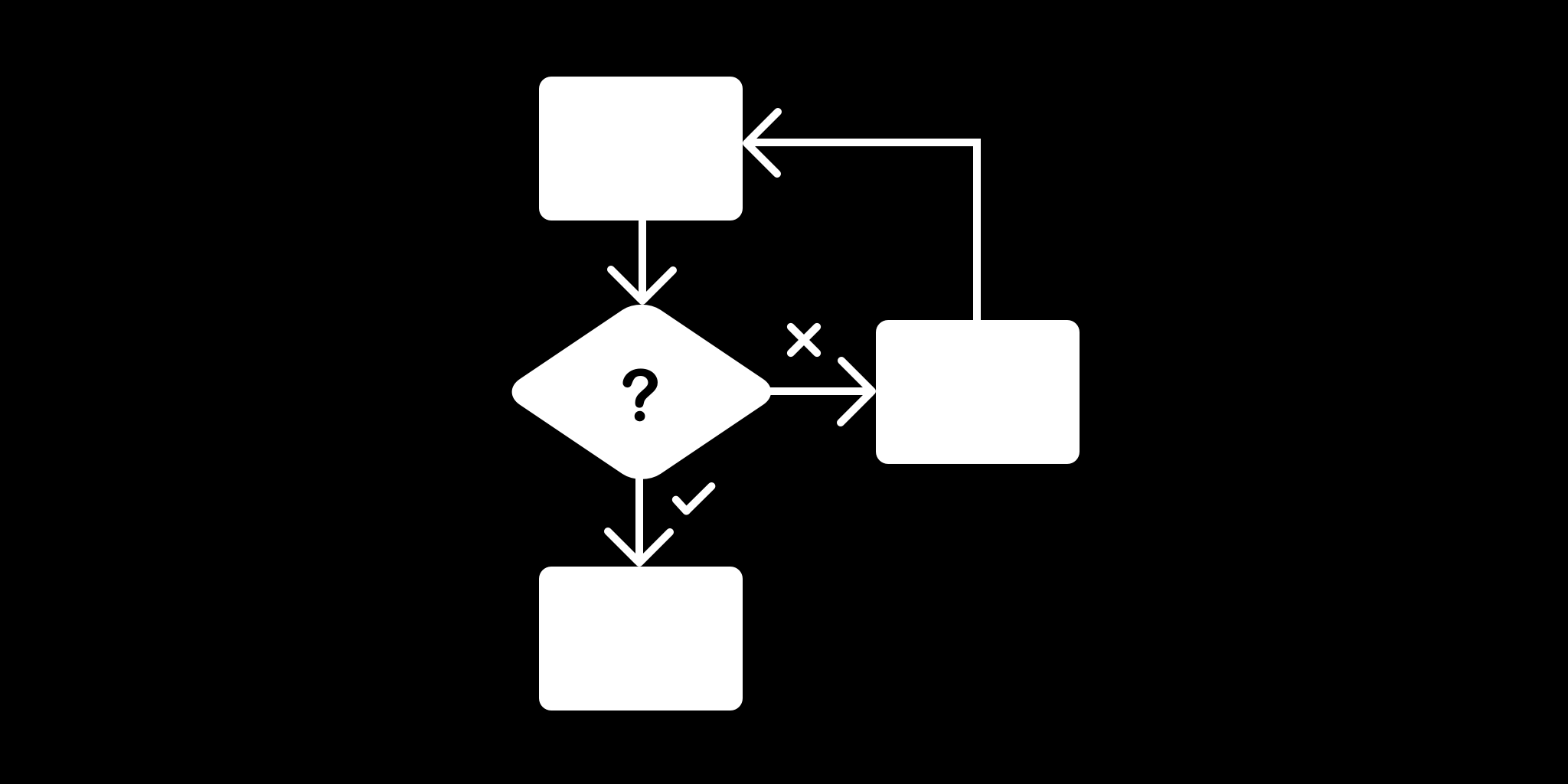

Studies show that only 4% of businesses ever measure and manage the success or failure of their business processes. The overwhelming majority of businesses are going about their operations without ever considering the impact of the core foundations of their business. Understanding and managing your business processes well is the key to longevity, and no process can truly be optimized without a well-managed workflow, too.
In fact, workflow management can make the difference between the success and failure of the organization as a whole. But what is workflow management, exactly? How does it differ from business process management? And how would you know if you had a problem with your workflow that keeps you from succeeding?
Aside from the obvious signs of failure, it’s not always easy to spot where the hang-ups in your workflow are happening. But by understanding what a good workflow looks like, you can reap the benefits throughout your entire company.
In this post, we’ll look at the basics of what a good workflow looks like, steps you can take to streamline your workflow processes, and how you can use a workflow management system like Gravity Flow for real-time workflow automation.
[content_upgrade cu_id=”13174″]Download our free quiz: How Good Is Your Current Workflow?[content_upgrade_button]Click Here[/content_upgrade_button][/content_upgrade]

What is Workflow Management?
In simple terms, a workflow is a plan that gets you from point A to point B.
Zach Messler from Appian describes it in terms of a road trip: your workflow would tell you where you’re going, what you need for the trip, your different routing options, where you should stop along the way, when you should get gas, who you should call in case of an emergency, and what time you expect to arrive.
Could you get to where you’re going without it? Maybe. But without a plan, you risk getting lost, delayed, or even derailed along the way. Your workflow is your roadmap to success.
[bctt tweet=”Your workflow is your roadmap to success.” username=”gravityflow_io”]
Workflow management, therefore, is the way to accomplish business goals strategically. It outlines any tasks, people, and resources needed to accomplish a specific outcome, according to defined metrics tied to business needs, on a repeatable basis.
Workflow management shouldn’t be confused with project management, which concerns itself with the optimization of tasks relating to a single instance of a project. Without workflow management, complicated repetitive processes can become overwhelming, leading to added stress, disorganization, poor quality of work, or worse.
Workflow management is often used interchangeably with the term Business Process Management (BPM), but there is a difference. BPM focuses on improving business processes as a whole (giving a big picture) to make the organization more efficient. This can include documenting and analyzing processes to find any slowdowns or indicators of disorganization within each workflow.
Using Zach’s road trip analogy once again, BPM would be equivalent to working at a traffic control center. While individual cars making road trips are a part of the equation (workflow is a part of BPM), the overall goal is to monitor traffic patterns as a whole and optimize the roads themselves for a better travel experience.
While the two are similar, and certainly work in parallel to improve an organization’s efficiency, each has its place. In terms of accomplishing daily goals, workflow management is an essential part of the BPM process when it comes to helping an organization run smoothly.
Good Workflow vs. Bad Workflow
Even if you feel you already have a good system in place for completing tasks and reaching goals, there are many reasons to take a second look at your business’s different workflows to ensure that they are fully optimized.
A truly optimized workflow will:
- Identify and remove unnecessary steps and processes that lead to slowdowns
- Assign the right tasks to those with the appropriate skills for better quality work
- Allow management to concentrate on strategic business activities (BPM) without worrying about meeting deadlines
- Provide a sequential (chronological) order for accomplishing tasks
- Automate some decisions and processes normally performed by employees (freeing up time)
- Reduce paperwork and other communication burdens (fewer emails, memos, meetings, etc.)
- Encourage collaboration between departments
- Track progress and assess performance
- Keep records of previous processes and make future processes repeatable
- Eliminate decision fatigue
Your workflow should also give you solutions to task management problems before they even occur. Your plan should ideally answer questions like, “Who are the stakeholders in this task?” “Who has decision-making authority over this task?“ “What happens if they aren’t available?” “Who else should be notified?” “What are the dependencies involved” and “What happens after this action is missed?”
A poorly optimized workflow (or no workflow), on the other hand, increases the risk of failure should things go wrong and requires much more manual work and team collaboration to accomplish the same tasks.
A bad workflow for an organization’s finance department, for example, might look like this:
- Employee A receives an invoice and scans the invoice as a PDF
- Employee A emails PDF to Employee B in the Finance Department
- Employee B emails Employee A to confirm that it was received
- Employee B prints the invoice and manually fills out relevant information or forms
- Employee B rescans the invoice as a PDF and saves a version for record-keeping
- Employee B sends payment to the appropriate vendor
- Employee B enters the transaction into the accounts payable system
While the task gets accomplished, the process is time-consuming for all involved, and requires A and B to remember what they need to do at each step in the process. Should a step be missed, the payment to the vendor may be delayed or even forgotten about entirely.
Using a proper workflow management solution would yield much better results:
- Employee A receives an invoice and scans it directly into accounts payable
- The invoice either goes through an automated process, or Employee B is alerted if approval is required
- Employee B approves the invoice digitally, if the approval process is triggered
- Payment is sent to the vendor, and a record of the transaction is automatically saved
With workflow management, there’s less manual effort (printing, scanning, and so on), and the most tedious tasks are automated, saving time and energy for everyone involved.

Why Workflow Matters for Your Business
Unfortunately, many businesses have workflow problems that go unnoticed or even ignored. This can be due to either ignorance – the people in charge simply don’t know there’s a better way – or inertia – “this is the way it’s always been done.”
But workflow management is designed to help businesses produce real results. It helps leaders know what’s happening in their organization at any given time, offers insights into costly practices that could be improved with automation, and can offer measurable results for success.
Automated workflows can also help businesses focus on more important tasks, like customer service, hiring top talent, or improving a core product or service. You shouldn’t have to waste time micromanaging staff or sorting through paperwork just to accomplish the simplest of tasks.
If you’re not sure whether or not you have a workflow problem, consider the following:
- Assess any current workflows that are undocumented or unspoken within your company
- Assess any current workflows that are documented
- Make a list of the biggest complaints relating to those workflows from both employees and customers
- Make a list of any technology you’re currently using to alleviate those complaints (or alternatively, make a wish list of desired technology)
- Identify an area where there is a major slow down, delay, or other issue as a result of workflow
- Get feedback from employees or customers (if necessary) to help identify areas where you may have a workflow problem
If there are indicators of repeated tasks, time crunches, communication mistakes, unmet goals, unfinished or poor quality deliverables, or late projects, it’s a sign of a poor (or missing) workflow.
Be sure to talk to team members who perform each task to help identify any major concerns, and gather as much data as possible on your Current Workflow to help define expectations for future planning.
[content_upgrade cu_id=”13174″]Is your Current Workflow working? Take our quiz to find out[content_upgrade_button]Click Here[/content_upgrade_button][/content_upgrade]
Gravity Flow: Powerful Workflow Management Software
Streamlining process automation for effective workflow management can be a tricky and often expensive proposition, with many workflow management tools operating on a SaaS model gating scalability and functionality behind steeply graded pricing tiers. They are often proprietary software tools that don’t have the API to integrate well with the many other software solutions collaborative businesses rely on, such as CRMs, time tracking tools, and document management software.
But there’s a better way.
Gravity Flow is a no-code, workflow automation solution trusted by organizations across the globe, from the NHS to Panasonic, to streamline business processes and fix bottlenecks.
By integrating with the open-source Gravity Forms WordPress plugin, it lets you add forms for your various business processes – onboarding, approvals, invoicing, and more – and create efficient, automated workflows that will automatically be sent to each member of the team using them. This removes bottlenecks and allows your team to spend less time on routine business processes and more time doing the creative work that really matters.
Gravity Flow lets you configure workflows for any use-case your business requires, from employee onboarding to vacation approval workflows, with a range of easy-to-use templates. With the Flowchart Extension, you can seamlessly visualize your workflows using the intuitive drag-and-drop builder. Other extensions include checklists, folders, and parent-child forms.
What’s more, because it’s built on WordPress, it integrates with thousands of plugins across the WordPress ecosystem, as well as featuring dedicated extensions to add integration with leading eCommerce solutions such as Stripe, Paypal, and WooCommerce. Check out the full feature set here.
Final Thoughts
As a general rule, a positive workflow will simplify processes, eliminate redundancies, minimize errors and help your employees accomplish tasks quickly and efficiently.
If you’re noticing bottlenecks in your operations or experiencing major (or even minor) setbacks on a consistent basis, it could be a sign of a poor workflow. Once you’ve identified the problem, you can start the journey to find and implement the right solution.
Gravity Flow is a powerful, scalable, extensible, and affordable solution for improving your workflow management. Why not give it a try today?